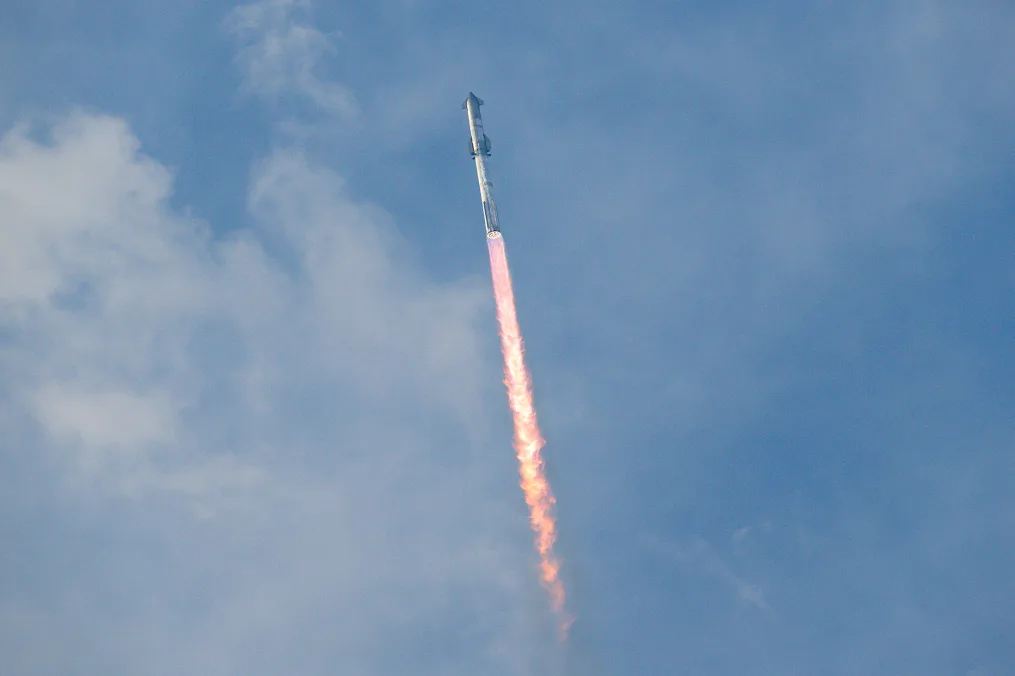Its 33 engines boost the spacecraft, which could eventually carry NASA astronauts to the moon’s surface, on a supersonic journey headed for space.
But the first two test flights ended in explosions in 2023.
SpaceX doesn’t regard these fiery mishaps as failures. Instead, the company utilizes flight tests to gather crucial data and make improvements before the next vehicle rolls out for liftoff.
And this week, another Starship soared from the Starbase facility over the Texas skies, with the team hoping the third time would be the charm.
Defying gravity
Starship’s eventful third test flight achieved multiple milestones before ending prematurely and likely breaking apart.
The spacecraft was expected to splash down in the Indian Ocean at the end of its hourlong flight, but SpaceX lost Starship’s signal shortly after the vehicle reentered Earth’s atmosphere.
During a live view of entry, a glowing red halo could be seen around Starship, indicating the scorching temperatures its heat shield faced.
However, the third flight of Starship flew longer and higher than either of the previous tests.
The spacecraft reached orbital speeds and carried out tests of capabilities that will be needed on future flights.

